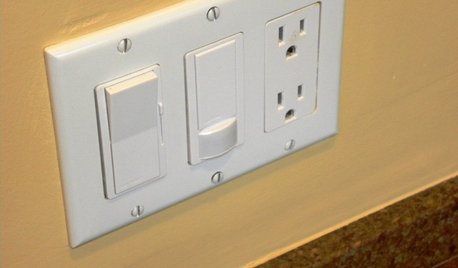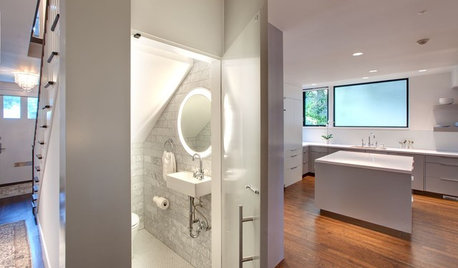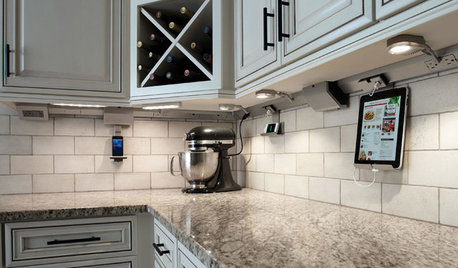Need recommendations for dimmers - low voltage/magnetic
cal_dreamer
17 years ago
Related Stories

GREAT HOME PROJECTSHow to Install a Dimmer Switch
New project for a new year: Take control of your lighting to set the right mood for entertaining, dining and work
Full Story
GREEN BUILDINGThe Big Freeze: Inventors Break New Ground to Keep Things Cool
Old-fashioned fridges can be energy guzzlers, but there are more eco-friendly ways of keeping food fresh, as these global innovations show
Full Story
BATHROOM DESIGNLight-Up Mirrors Offer Bright Design Solutions
If you're taking a dim view of a problem bathroom area, try the flash of design brilliance that is the electric mirror
Full Story
LIGHTINGThe Lowdown on High-Efficiency LED Lighting
Learn about LED tapes, ropes, pucks and more to create a flexible and energy-efficient lighting design that looks great
Full Story
LIGHTINGWhat to Know About Switching to LED Lightbulbs
If you’ve been thinking about changing over to LEDs but aren't sure how to do it and which to buy, this story is for you
Full Story
KITCHEN DESIGN7 Awesome Add-ons for Kitchen Cabinets
Useful gadgets, docks for your devices, extra lighting ... when it comes to cabinets, do look down
Full Story
LIGHTING5 Questions to Ask for the Best Room Lighting
Get your overhead, task and accent lighting right for decorative beauty, less eyestrain and a focus exactly where you want
Full Story
KITCHEN DESIGN9 Ways to Save on Your Kitchen Remodel
A designer shares key areas where you can economize — and still get the kitchen of your dreams
Full Story
DECORATING GUIDESHomeowners Are Flipping for Push-Button Light Switches
Button-style switches are hot off the presses again, making news in new homes and antique remodels
Full Story
BATHROOM DESIGNHow to Settle on a Shower Bench
We help a Houzz user ask all the right questions for designing a stylish, practical and safe shower bench
Full Story





Jon1270
dmlove
Related Professionals
Fort Washington Lighting · Green Bay Lighting · Carlsbad Furniture & Accessories · Cedar Rapids Furniture & Accessories · Dallas Furniture & Accessories · Naples Furniture & Accessories · Norwalk Furniture & Accessories · San Juan Capistrano Furniture & Accessories · Wellesley Furniture & Accessories · Boise Interior Designers & Decorators · Boise Decks, Patios & Outdoor Enclosures · Conroe Decks, Patios & Outdoor Enclosures · Dayton Decks, Patios & Outdoor Enclosures · Dracut Decks, Patios & Outdoor Enclosures · Southampton Decks, Patios & Outdoor Enclosuresyogini
cal_dreamerOriginal Author
Jon1270
dim4fun
cal_dreamerOriginal Author
hgtvdream.com